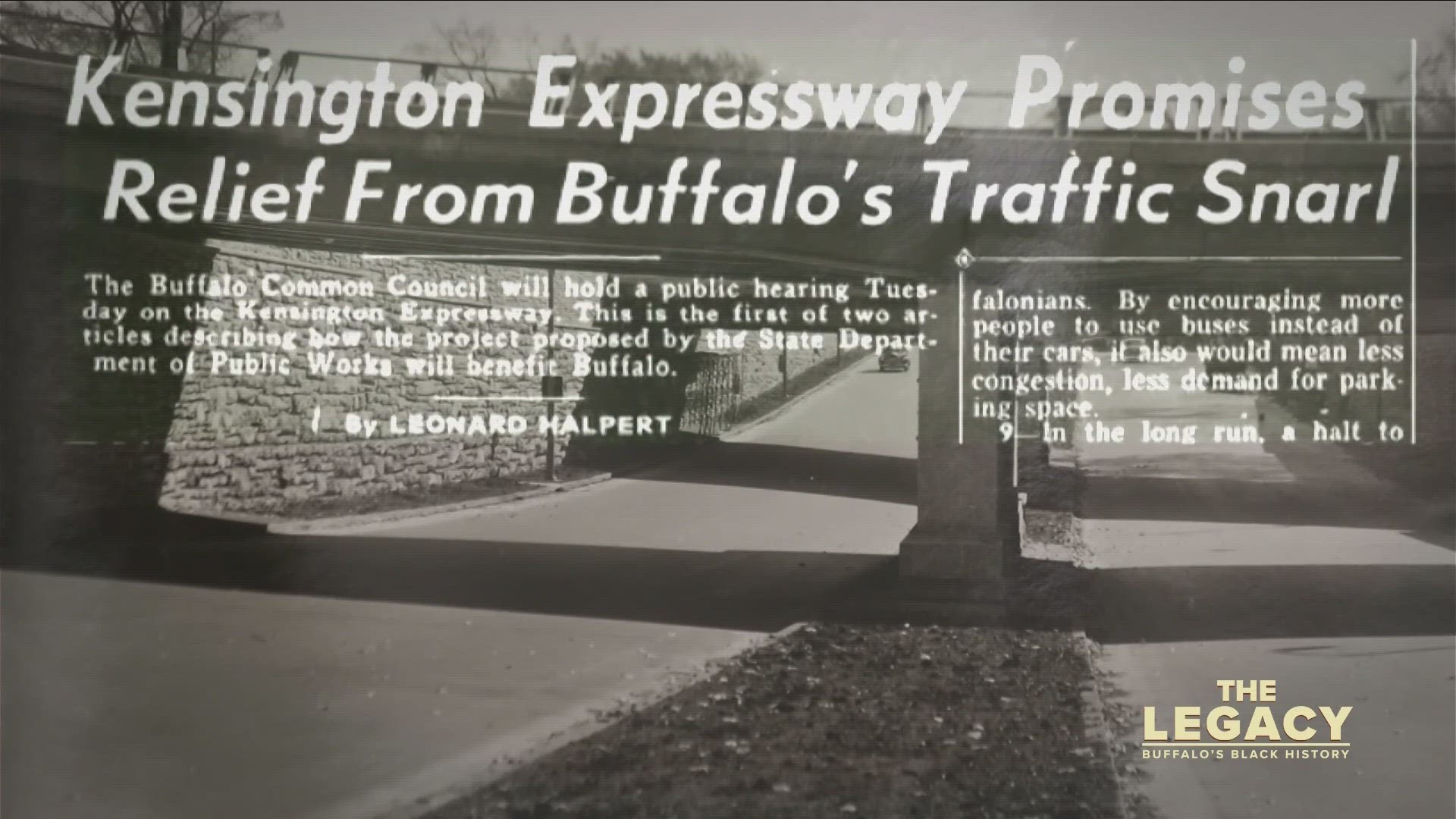BUFFALO, N.Y. — Most Western New Yorkers who traverse the Kensington Expressway don’t remember a time before the highway existed.
For over a generation, the 33 has been an artery that has cut through the Queen City, allowing for easy access into Buffalo’s urban center from the suburbs and the Thruway.
But some residents still remember life before the Kensington.
Clifford Bell and Terrence Robinson have lived in the neighborhoods adjacent to the expressway for most of their lives. Bell lived on Wilson Avenue, and Robinson along the Humboldt Parkway.
“It was a great community people lived in there and and bought things in there and it did well,” Bell said.
Before the expressway was built, the neighborhoods were diverse melting pots of ethnic groups.
“The area we moved into was predominantly German, and Italian,” Bell said.
Robinson remembers the parkway that allowed for easy access between Delaware Park and what would eventually be called MLK Park.
“A park-like setting where we play touch football, where we walked down, where you had a little respite,” Robinson said.
Robinson remembers his elementary classes being predominantly white in the early 1950s.
“By the time I was in eighth grade it was probably 80%, African-American black, “Robinson said. “Boom, transition in five, six years.”
In post-war America, the expressway was the preferred infrastructure project for federal and state planners. Buffalo, like many urban centers, wasn’t immune to the push for expressway arterials that encircled and cut through the metropolitan area.
The first mention of an expressway cutting through the center of Buffalo was in 1946, but it wasn’t until Feb. 16, 1954, when the state unveiled their detailed plans for the Kensington.
That plan included a multi-lane highway that would cut through the heart of Olmsted’s parkway system along Humboldt.
The expressway would allow for tens of thousands of vehicles to enter and exit Buffalo proper each day without clogging up other arterial roads.
“I said, 'Well, here we go again,' because the money is leaving, the relationships are leaving, there is no real development that's going to happen here,” Bell said.
Almost immediately after serious conversation started about the Kensington Expressway in 1954, white residents who lived near the proposed project area began selling off their property.
“The folks that knew about this development, got a chance to sell their property, and move on,” Bell said. “We begin to buy in and found out after the fact that there was going to be an expressway put in there.”
There was some opposition to the states plan in 1954, but nothing significant enough to sway lawmakers.
In September 1954, the Buffalo Common Council passed a unanimous resolution, 15-0, to endorse the proposed expressway. At the time the council called it a “golden opportunity” for the city.
That golden opportunity, however, meant over 630 homes needed to be demolished, and Olmsted’s Humboldt Parkway would be torn up.
Construction began in 1957, and the expressway was completed in 1971.
“It changed the whole atmosphere in the community because we lost the potential for growth,” Bell said. “Because a lot of the people that were spending money and had money were leaving.”
Fast forward to Feb. 16, 2024, 70 years after the state first proposed the expressway, where Gov. Kathy Hochul and state officials announced that their plan for a $1 billion tunnel between Sydney Street and Dodge Street had been approved by the Federal Highway Administration.
Governor Hochul and the New York State Department of Transportation believe the project will reconnect the community that the Kensington broke apart.
Even though the project has detractors and supporters, if you ask anyone who lived in the neighborhood before the original expressway was put in, the plan is a far cry from what was originally there.
“When I can think of all of the people that grew up here, people that were Buffalo, and they wiped it out,” Robinson said. “They disregard it, they don't acknowledge it.”

